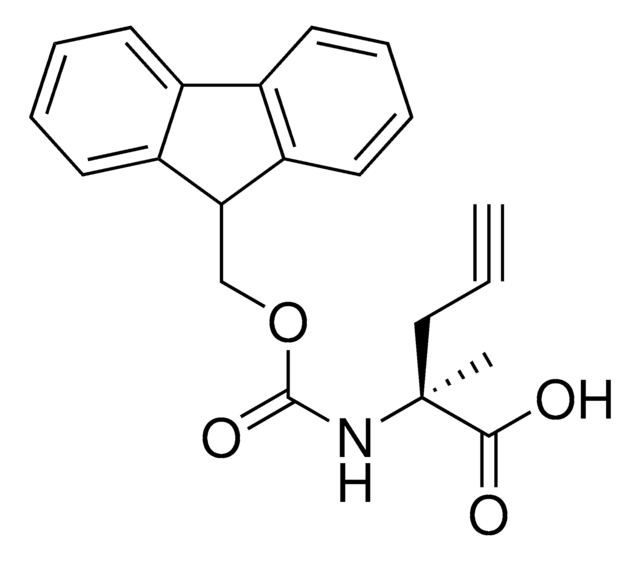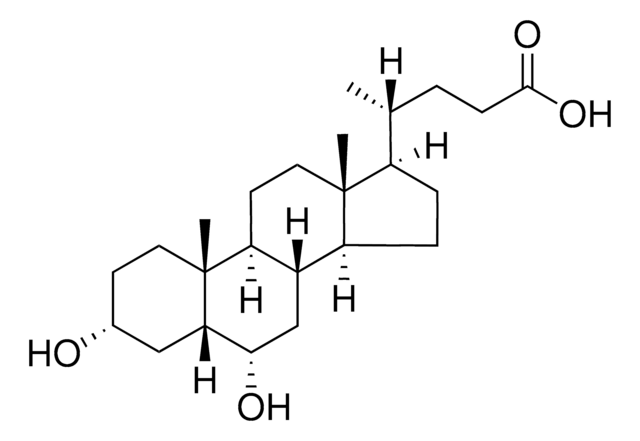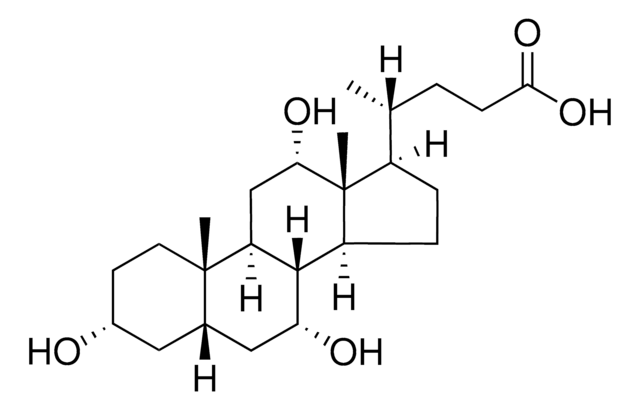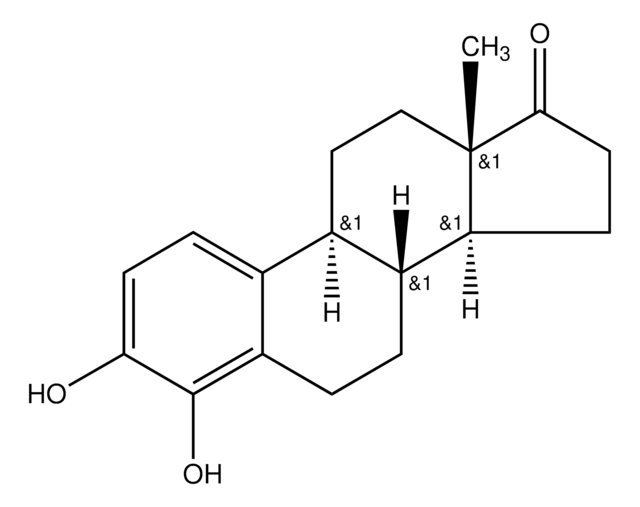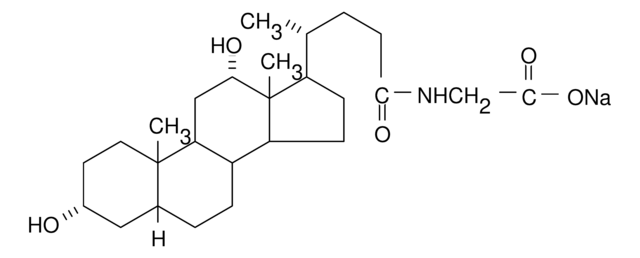Key Documents
H3878
Hyodeoxycholic acid
≥98%
Synonim(y):
3α,6α-Dihydroxy-5β-cholan-24-oic acid
About This Item
Polecane produkty
Próba
≥98%
mp
200-201 °C (lit.)
ciąg SMILES
C[C@H](CCC(O)=O)[C@H]1CC[C@H]2[C@@H]3C[C@H](O)[C@@H]4C[C@H](O)CC[C@]4(C)[C@H]3CC[C@]12C
InChI
1S/C24H40O4/c1-14(4-7-22(27)28)17-5-6-18-16-13-21(26)20-12-15(25)8-10-24(20,3)19(16)9-11-23(17,18)2/h14-21,25-26H,4-13H2,1-3H3,(H,27,28)/t14-,15-,16+,17-,18+,19+,20+,21+,23-,24-/m1/s1
Klucz InChI
DGABKXLVXPYZII-SIBKNCMHSA-N
informacje o genach
human ... NR1H2(7376) , NR1H3(10062)
Szukasz podobnych produktów? Odwiedź Przewodnik dotyczący porównywania produktów
Opis ogólny
Zastosowanie
- as a standard for serum bile acid profiling by liquid chromatography-mass spectrometry (LC-MS) method in rat cells.
- as a component of the growth medium to study its effect as an anti-aging small molecule on the chronological life span (CLS) of the pex5Δ (Δ) strain.
- as a standard for analyzing bile acid composition and total bile acids in mice cells.
najczęściej kupowane z tym produktem
Kod klasy składowania
11 - Combustible Solids
Klasa zagrożenia wodnego (WGK)
WGK 3
Temperatura zapłonu (°F)
Not applicable
Temperatura zapłonu (°C)
Not applicable
Środki ochrony indywidualnej
Eyeshields, Gloves, type N95 (US)
Certyfikaty analizy (CoA)
Poszukaj Certyfikaty analizy (CoA), wpisując numer partii/serii produktów. Numery serii i partii można znaleźć na etykiecie produktu po słowach „seria” lub „partia”.
Masz już ten produkt?
Dokumenty związane z niedawno zakupionymi produktami zostały zamieszczone w Bibliotece dokumentów.
Klienci oglądali również te produkty
Nasz zespół naukowców ma doświadczenie we wszystkich obszarach badań, w tym w naukach przyrodniczych, materiałoznawstwie, syntezie chemicznej, chromatografii, analityce i wielu innych dziedzinach.
Skontaktuj się z zespołem ds. pomocy technicznej
